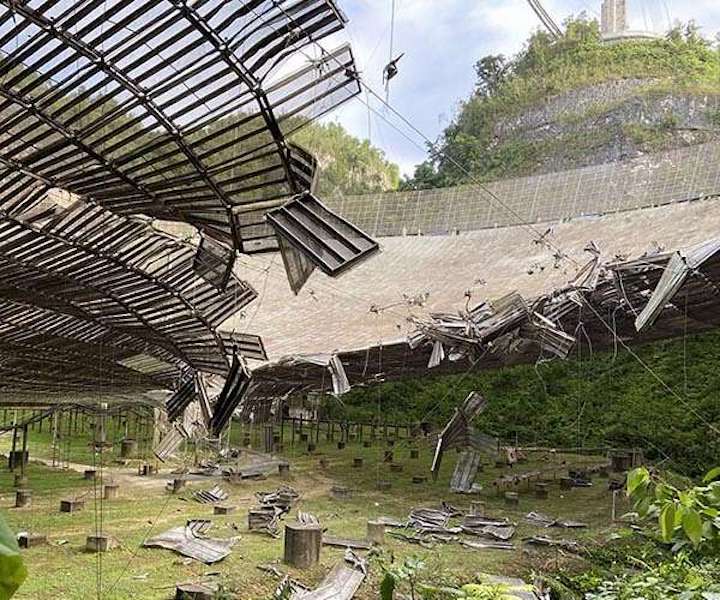15.03.2022

The famous Arecibo Observatory in Puerto Rico, once home to the world's most powerful radio telescope, has reopened to visitors more than a year after the giant facility collapsed.
The visitor center and observation deck are now open to visitors who make reservations in advance. From the outdoor deck, visitors can see the valley and remaining reflective dish -- 1,000 feet in diameter.
Visitors began signing up for tours as soon as Arecibo announced it would reopen Wednesday, said Ricardo Correa, director of communications.
"People thought we were going to be closed forever because we lost the big instrument. To their surprise, they are seeing that science is still ongoing here," Correa said. "Arecibo is not closed anymore."
In addition to the visitor center, Arecibo is home to other active astronomical instruments, such as a 12-meter telescope and a LIDAR facility, which can study the atmosphere by bouncing laser beams off particles about 20 to 100 miles above the Earth.
Arecibo scientists also are using artificial intelligence computers to sift through decades of observational data from the telescope that dates back to the 1960s "to see if there is something we may have missed," Correa said.
The 59-year-old facility had hosted Nobel Prize-winning scientists and blockbuster Hollywood movies alike over the years. Its futuristic-looking suspension bridge and large Gregorian dome were once featured in movies like Contact in 1997 starring Jodie Foster and the 1995 James Bond film GoldenEye.
A new outdoor exhibit has also been added with artifacts recovered from the telescope and its platform.
To remove larger pieces of debris, crews had to build temporary roads into the large valley. Ongoing work includes planting native vegetation to prevent erosion, according to Arecibo's latest update on the work.
The National Science Foundation owns the facility, which is currently managed by the University of Central Florida and a consortium of organizations and businesses on the island.
The observatory is about 60 miles west of the capital, San Juan, in the mountainous interior of Puerto Rico. It was damaged during Hurricane Maria in 2017 and rattled by earthquakes in early 2020.
Investigators are still trying to determine the precise cause of cable failures that led to the collapse, according to the NSF.
Quelle: SD

